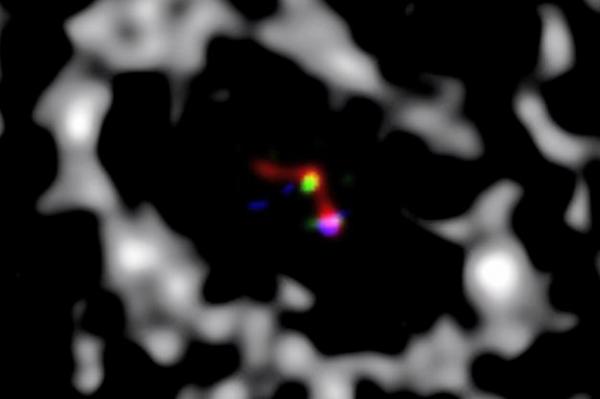
TUCSON, Nov. 18 (UPI) ─ Planet formation is an elusive process, but not too elusive for the astronomers at the University of Arizona, who for the first time imaged a planet in the act of forming.
The still-forming planet was spotted in a gap in the protoplanetary disk of LkCa15, a star 450 light-years from Earth.
“This is the first time that we’ve imaged a planet that we can say is still forming,” Steph Sallum, an Arizona graduate student, claimed in a press release.
Researchers have observed planet formation before, but only through intuition. Small orbital gaps in the disk hint at the presence of protoplanets, but actually imaging a planet that is still forming is much more difficult.
Two things made it possible: a significant gap in LkCa15’s disk and improving technology.
Picking out a faint object next to a luminous star isn’t easy. Exoplanets are typically found by measuring the regular dimming of an alien world’s host star as the exoplanet passes across the stellar face. But the advanced imaging technology of both Earthbound and space-based observatories are making it possible to see things astronomers have never seen before.
Researchers at Arizona were able to get an unusually crisp image of LkCa15 and its protoplanet using the university’s Large Binocular Telescope, or LBT, the world’s largest telescope, and its Magellan Telescope, which boasts the all-important Adaptive Optics System.
The power of these telescopes combined with newly developed imaging techniques allowed astronomers to minimize the atmospheric turbulence that causes stars to shimmer.
“Results like this have only been made possible with the application of a lot of very advanced new technology to the business of imaging the stars,” explained co-author Peter Tuthill, an astronomy professor at the University of Sydney. “And it’s really great to see them yielding such impressive results.”
Researchers detailed the protoplanet and their imaging efforts in a new paper, published this week in the journal Nature.
Scientists were able to confirm the planet’s ongoing formation using Magellan’s adaptive optics system. Newly forming objects glow a hot, red wavelength of light as they accrete hydrogen. Magellan can pick up this specific wavelength.
“That single dark shade of red light is emitted by both the planet and the star as they undergo the same growing process,” said co-author Kate Follette, a former Arizona graduate student now a postdoctoral researcher at Stanford. “We were able to separate the light of the faint planet from the light of the much brighter star and to see that they were both growing and glowing in this very distinct shade of red.”





